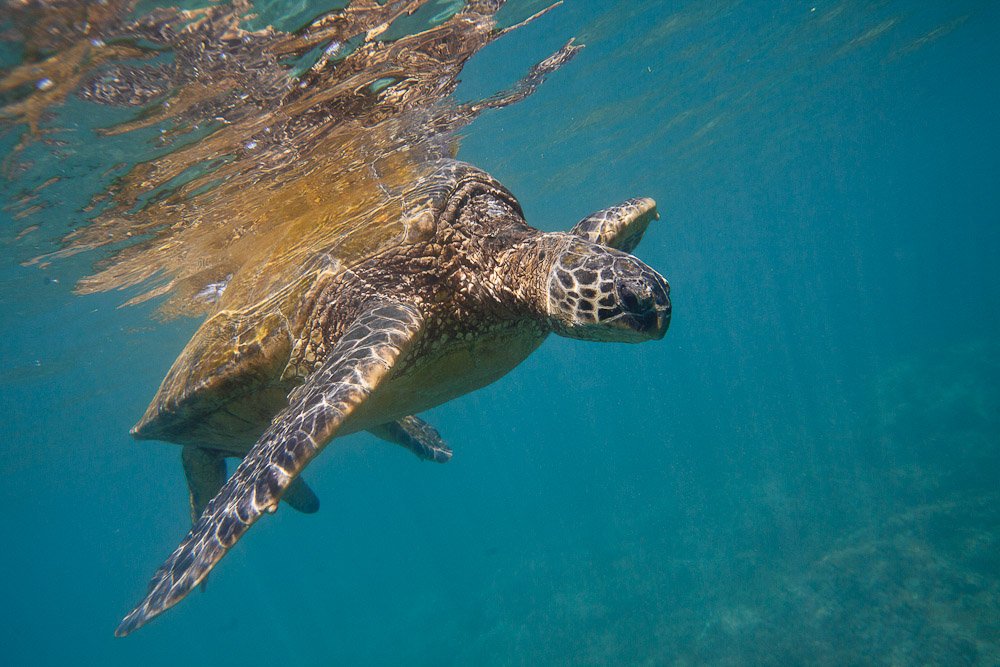Sea turtles could be making an important comeback.
A survey of Pacific marine ecosystems, published in academic journal PLOS One, found evidence that some endangered sea turtle populations are recovering. The conclusion is based on diver surveys, primarily of green and hawksbill sea turtle populations, conducted across the Pacific region from 2002 to 2015.
“You often hear such bad and challenging news about the threats that our ocean faces,” said Kyle Van Houtan, chief scientist at the Monterey Bay Aquarium in California and lead researcher of the survey. “There are places where there are a lot of sea turtles very close to shore. And that’s good news.”
Take Action: Protect our Oceans! Prevent Ocean Plastic Pollution
Green turtle populations surveyed by scientists were 11 times greater than hawksbill populations, likely due to human activity. Hawksbill turtles have historically been captured for their shells, which are used to make jewelry and other decorative items. And the species depends on coral reefs — whose existence is also vulnerable to overfishing, global warming, and pollutants flowing into the ocean, according to the report.
“We didn’t spot enough of hawksbills to be able to analyze their population trends over time. It’s a sign that their population is really struggling,” said Sarah Becker, ecologist at the Monterey Bay Aquarium and author of the research article.
Read More: Sea Turtle Populations Soared by 980% After Legal Protections: Report
The ocean surrounding the Hawaiian Islands were found to have the smallest counts of sea turtles but those small populations grew at the highest rate annually of all turtle populations surveyed. Scientists believe this finding confirms that efforts to protect endangered animals and other conservation measures can enable vulnerable species to thrive.

However, in order to do so, these sea turtle populations may be pushed to migrate away from their current homes.
“As the ocean warms with climate change, that ideal temperature is going to move toward the poles and away from the equator,” Van Houtan told NBC News. “As the temperatures change, those distributions are going to change.”
Read More: 4 Animals Making a Comeback After Facing Extinction
The highest density of sea turtles was documented when sea surface temperatures remained close to 27.5 degrees Celsius and in areas that were not heavily impacted by human activity. The survey also found that locations formerly subject to heavy exploitation can recuperate if rigid conservation measures are put in place.
The in-water surveys are among the first of their kind in the region and of sea turtle populations. Sea turtle counts are more reliable underwater than on land, where only newly-hatched turtles and their egg-laying mothers can be found. The findings have left scientists optimistic about the future of these sea turtle populations and the use of such comprehensive surveys.
“Though such intensive surveys have great value, they are logistically demanding and therefore have an uncertain budget and programmatic future,” the report reads. “We hope the methods we described here may be applied to future comparatively low-cost surveys.”